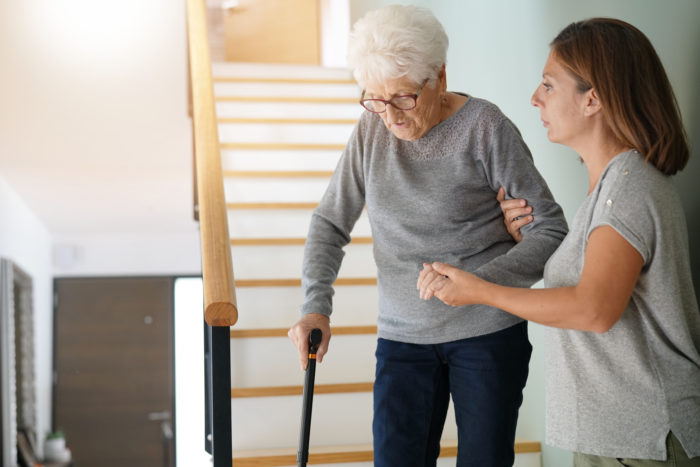Could Balanced Pain Management Limit Falls for Seniors?
March 3, 2020
Falls and fractures are all-too-common injuries for seniors. Precautions usually include installing grab bars, removing trip hazards and using a walker or cane. But new research shows seniors might also consider another approach: balanced pain management.

As outlined in The Journals of Gerontology, researchers found that opioid use is “significantly” linked to an increased risk of falls and fall injuries among seniors. Each year such injuries land more than 3 million seniors in emergency rooms across the country.
As the article’s authors note, Americans age 60 and older are prescribed opioids for pain almost twice as often as younger patients. And a quarter of them take prescription opioids long term.
This may not always be the best course of treatment, as the research suggests. A more balanced, patient-centered approach could entail integrative techniques that include non-opioid treatment options – an approach that takes fall risks into consideration.
For a senior experiencing acute pain during surgery, for example, multimodal analgesia can be critical. The scaled, customized approach combines opioids with non-opioid options, such as IV acetaminophen and topical analgesics, to provide safe, personalized pain treatment.
For chronic pain, such as arthritis or chronic low back pain, a combination of medications may help: anti-inflammatory drugs, topical pain medication or nerve blocks, for instance. Non-pharmacologic treatments are also important. Complementary approaches such as physical therapy or chiropractic care, for example, can play a role. So too can treatment for the emotional and psychological impact of pain.
The study’s authors encourage more education as a first step toward limiting seniors’ unnecessary exposure to opioids and the related risk of falls. Increased use of non-opioid interventions is also important, they note. With more information and access to a wider range of treatment options, seniors at risk for falls can work with their health care providers to chart a safer, more personalized path to pain management.
Categorized in: Blog

